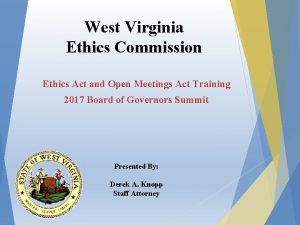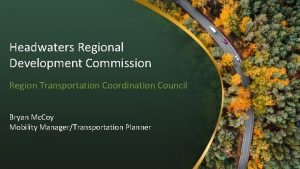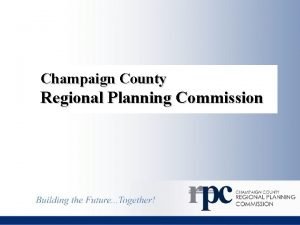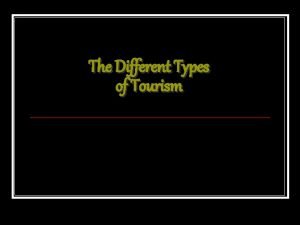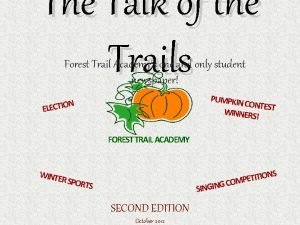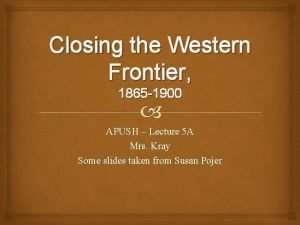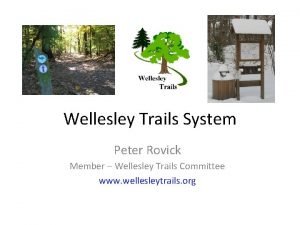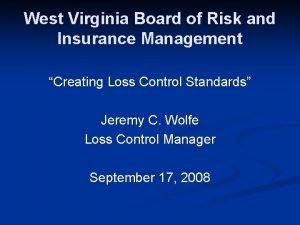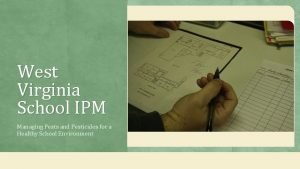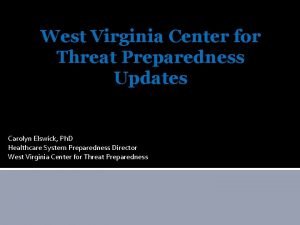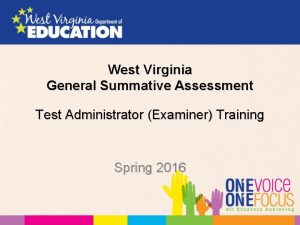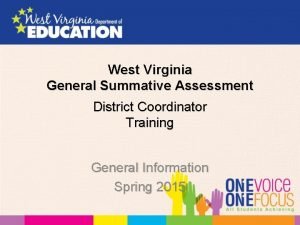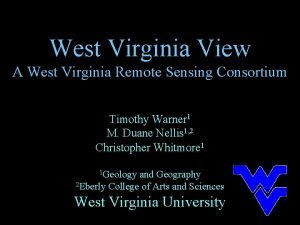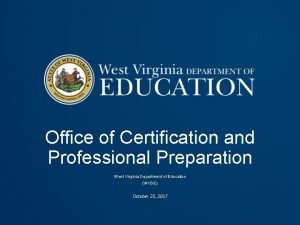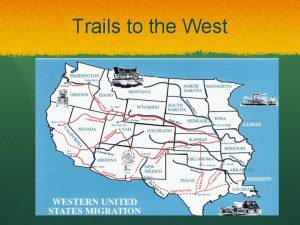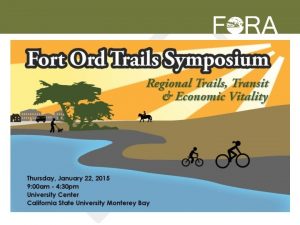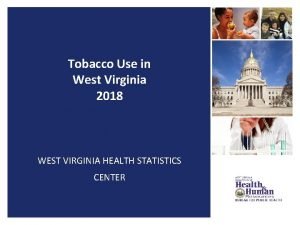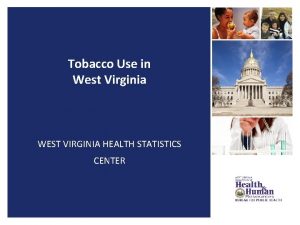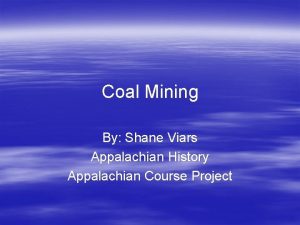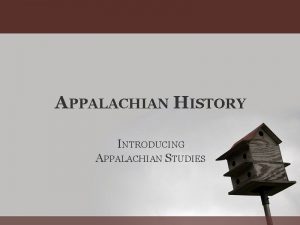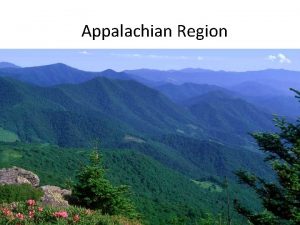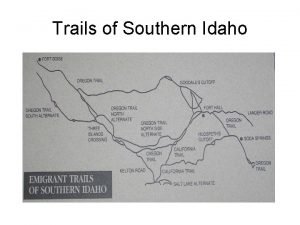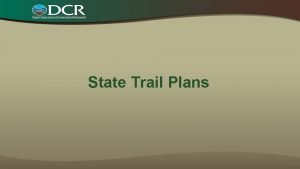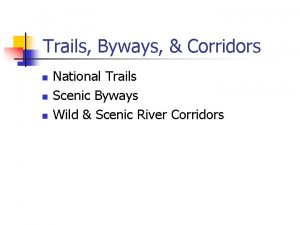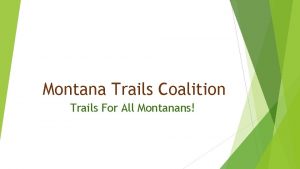Appalachian Regional Commission West Virginia Tourism Trails Initiative








































- Slides: 40

Appalachian Regional Commission West Virginia Tourism Trails Initiative Attraction Segmentation Analysis Presented by Economics Research Associates In association with WMTH and BWSC November 8, 2006

Objective • Identify potential trail opportunities across the region – Highlight clusters of complementary attractions that enhance market appeal and create a critical mass of visitor activities – Identify potential niche marketing and cross-marketing opportunities

Methodology • Iterative process – Identify Complementary / Related Attractions from the Visitor Perspective to Create Themed Experiences – Identify Relevant and Proximate Visitor Services – Identify Dominant Attraction Categories – Identify Target Markets (seniors, families, etc. )

Attraction Inventory By Type

Visitor Experience Themes • History / Culture Travelers • Active Outdoor Enthusiasts • Gun & Rod Club • Coal Heritage • Historic Railroads • Country Charm

Complementary Activities = Themed Experiences



Theme 1: History / Cultural Attractions • Historic Towns / Sites (60) • Theater (11) • Museums (10) • Railroads (10) • Civil War / Military History (8) • Native American (7) • Music (5) • Hatfields & Mc. Coys (4) • Bridges of Interest (3) • Historic Churches (1) • Courthouse (1)






Theme 2: Active Outdoor Activities • Hiking (19) • ATV / Motorsports (14) • Golfing (13) • Boating (9) • Rafting (9) • Historic Churches (9) • Biking (6) • Skiing (1)







Theme 3: Gun & Rod Experiences • Fishing (20) • Hunting (6) • Archery (4)




Theme 4: Coal Heritage • Coal Mines / Tunnels / Towns (24) • Historic Railroads (10)




Theme 5: Historic Railroads • Historic Railroads (10)


Theme 6: Country Charm Attractions • Historic Towns / Sites (60) • Scenery (11) • Museums (10) • Stables / Equine (8) • Music (5) • Bridges of Interest (3)






Conclusions and Recommendations

Regional Strengths • History / Culture – Historic Sites and Towns, Railroads • Outdoor Activities – Fishing, Hiking, Rafting, Golfing, Scenic Views • Coal Heritage – Mines, Tunnels, Coal Towns, Coal RRs, Music

Recommended Next Steps • Use local knowledge of roads, physical and natural boundaries to define visitor ready and visitor marketable trails and corridors from themed experiences • Identify individual anchor attractions and services within themed experiences that can be linked to secondary attractions and services • Identify necessary improvements to attractions and visitor services to strengthen themed trails and corridors • Use final corridor and trail themes and alignments to prepare marketing materials such as visitor maps, route signs, package tours, advertisements, web site, etc.
 West virginia ethics commission
West virginia ethics commission Virginia preschool initiative income guidelines 2020
Virginia preschool initiative income guidelines 2020 Virginia equity math
Virginia equity math Virginia initiative plant
Virginia initiative plant Headwaters regional development commission
Headwaters regional development commission Brookens building
Brookens building Mass tourism vs alternative tourism
Mass tourism vs alternative tourism Canadian tourism commission
Canadian tourism commission Ample trails
Ample trails Ample trails
Ample trails Forest trails academy
Forest trails academy Sodbusters apush
Sodbusters apush Wellesley trails
Wellesley trails Apush chapter 17
Apush chapter 17 Pembina trails school division edsby
Pembina trails school division edsby Overland trails apush
Overland trails apush West midlands regional genetics laboratory
West midlands regional genetics laboratory Mudaliar commission images
Mudaliar commission images Graduated commission example
Graduated commission example Virginia commission on youth
Virginia commission on youth Seo northern virginia
Seo northern virginia West virginia project risk management
West virginia project risk management Fumigation west virginia
Fumigation west virginia Degree works wvu
Degree works wvu Unicare
Unicare Iep writer wv
Iep writer wv West virginia energy code
West virginia energy code West virginia center for threat preparedness
West virginia center for threat preparedness West virginia general summative assessment
West virginia general summative assessment West virginia budget
West virginia budget Performance pyramid fms
Performance pyramid fms West virginia to louisiana
West virginia to louisiana West virginia circumcision
West virginia circumcision Wv airast secure browser
Wv airast secure browser Randy huffman west virginia
Randy huffman west virginia West virginia adult protective services
West virginia adult protective services Aetna better health wv
Aetna better health wv West virginia view
West virginia view West virginia
West virginia Wvde certification forms
Wvde certification forms Aetna better health of wv provider phone number
Aetna better health of wv provider phone number
